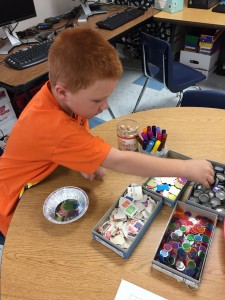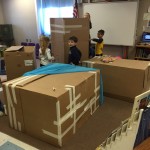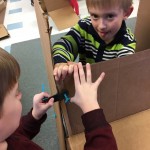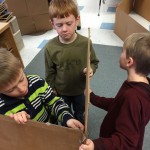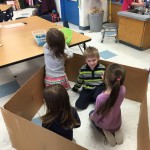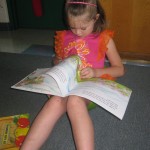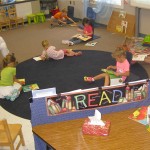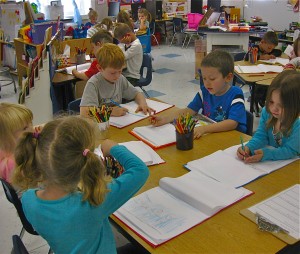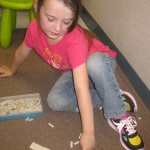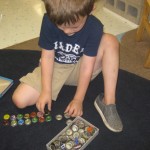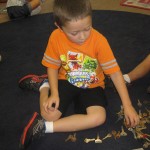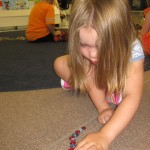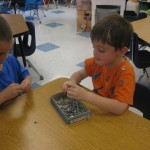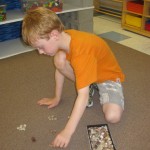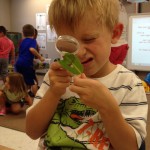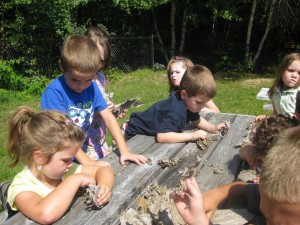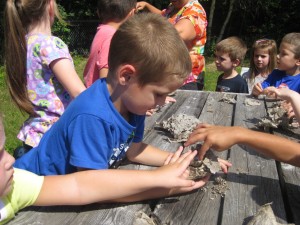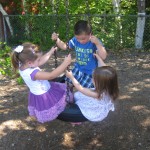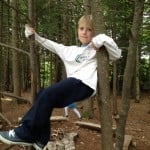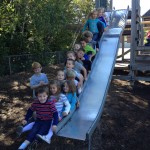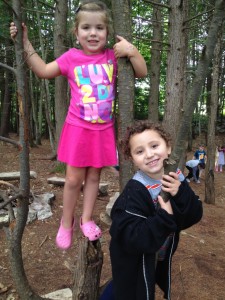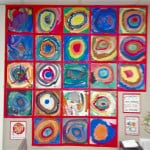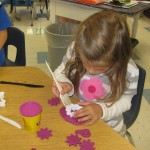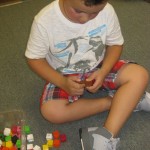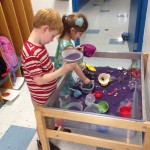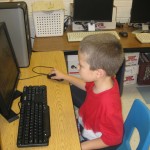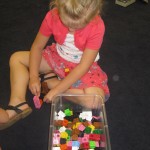We have lots of time to work in the block area during our afternoon activity time. There are so many wonderful benefits to working with the wooden Unit Blocks. The blocks are called Unit Blocks because they are proportional in size.
When working in blocks, the KinderKids learn counting, comparison of length and width, names of shapes, and how to combine some geometric shapes to make other shapes. They are learning the basics of addition when they discover that two short blocks are the same length as the next size block.
The KinderKids learn science when they experience gravity as their constructions fall. They learn the use of simple machines such as ramps when building. Their language skills and vocabulary improve as they talk about their creations and tell the stories that they are representing with the blocks. Children learn to write as they make signs and as teachers help them write stories about what they are building.
Children learn cooperation and sharing when they work together with the blocks. They develop problem-solving skills and learn good work habits since they are responsible for picking up when they finish.
So, when your child tells you they played in blocks at school, they actually were learning math, science, and literacy while enjoying themselves through working with blocks.

